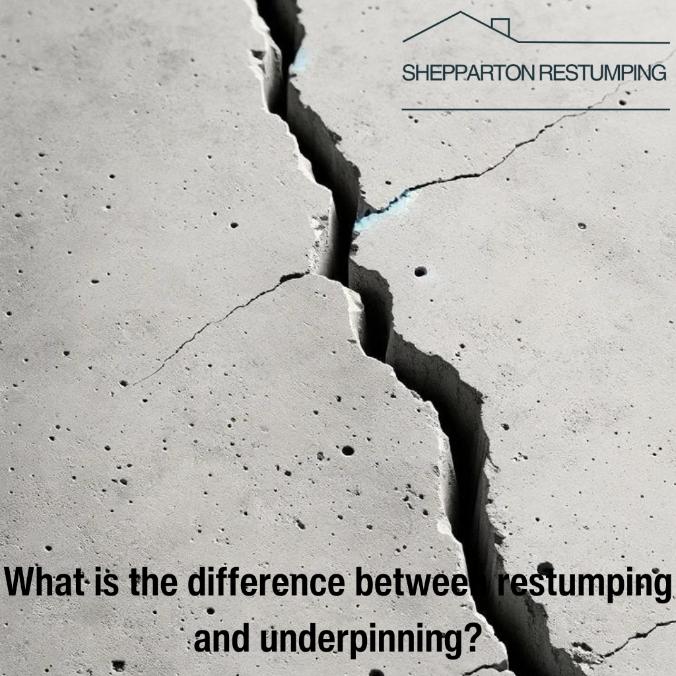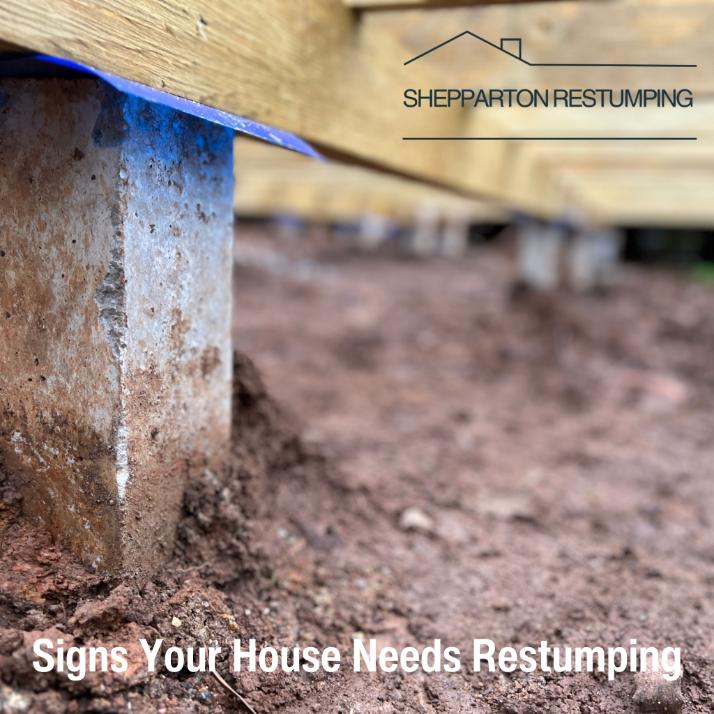The difference between restumping and underpinning is used when the structure is built on house stumps, whereas underpinning is used when a structure is built on a slab or strip footing.
Both methods are essential for keeping your home safe and solid, but restumping and reblocking focus specifically on updating the supports under your house.
In this post, we’ll discuss restumping and underpinning more so you can make the right decision for your next project.
What is Restumping?
Restumping is essentially the process of replacing the old stumps under a house with new ones to keep everything stable and level. This is often needed when the existing stumps are worn out from soil changes, moisture, or pests.
The job involves jacking up the house slightly to remove the bad stumps and put in new, stronger ones, usually made from concrete or steel. It’s a key way to ensure your home stays safe and sound for years.
How long does it take to restump a house? Read our blog to find out.
What is Underpinning?
Underpinning is a technique used to strengthen the foundation of a building. It’s often needed when the original foundation can’t properly support the structure anymore or if the soil underneath has weakened.
The process involves extending the foundation to reach more stable soil, which helps keep the building safe and steady. This makes underpinning essential for fixing and preventing issues that could cause serious damage to the structure.
It’s a great way to ensure your building remains robust and secure for a long time.

Is Underpinning the Same As Restumping?
No, underpinning isn’t the same as restumping. Underpinning is all about making the foundation of a building stronger, especially when the soil below can no longer support it properly.
It involves digging deeper or wider to reach more stable ground. Conversely, restumping means replacing old or worn-out stumps under a house that help keep the floor level and the structure stable.
Both methods are crucial for keeping a building safe and sound but focus on different parts of its support system.
How Do I Know If My House is Built on Stumps?
You will know when your house is built on stumps when you can see wooden, concrete, or steel posts supporting the floor structure above the ground. Often, there will be a visible space between the ground and the floor of your home, especially around the perimeter.
If unsure, a quick check under the house or a consultation with a building inspector can confirm the type of foundation your home uses.
How Do I Know If My House is Built on a Slab?
You will know when your house is built on a slab when the floor sits directly on the ground without any visible gaps. Slab foundations involve a thick layer of concrete laid right on the soil, which you can often see just at the base of your home’s exterior walls.
Homes on slabs usually have fewer steps up to the doors, making everything look more flush with the ground.





